Erin Henslee
2022 KEEN Rising Star
Dr. Erin Henslee, Assistant Professor and founding faculty member of the Department of Engineering at Wake Forest University, is a 2022 KEEN Rising Star. The following is taken from her interview with Engineering Unleashed staff.
Dr. Erin Henslee
"We have to show students they won't develop past a certain threshold without some level of discomfort or failure. The entrepreneurial mindset gives us a vocabulary and framework to talk about how to experience these things so we can grow."
Dr. Erin Henslee’s focus has always been on her students.
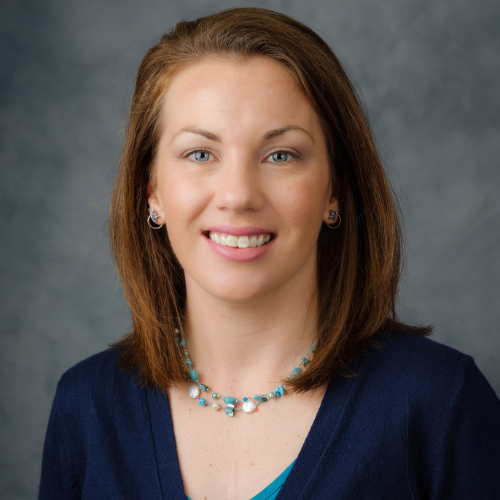 “I ask myself questions like, ‘What should my students be able to do by the end of this class? What are the things they will have accomplished, or can show or demonstrate?’ Then I work backwards from that versus working straight through chapters in a textbook.”
“I ask myself questions like, ‘What should my students be able to do by the end of this class? What are the things they will have accomplished, or can show or demonstrate?’ Then I work backwards from that versus working straight through chapters in a textbook.”
Guiding this is her realization that the things she wants her students to be able to do incorporate problem-solving, working together, being creative - and enjoying themselves.
“Those aren’t formal course learning outcomes, but they drive my decision making and how I approach giving them the technical content," Erin says. "I look for ways to integrate lectures with hands-on activities and community-based or service learning. I try to be intentional about taking a student-centered approach rather than a content-centered approach."
Teaching Methods
How have Erin’s teaching methods evolved?
"Like just about everybody, the first class I taught, I was given a binder of class materials. From a survival mode perspective, you use that binder!"
So what happened to turn that around?
"Having the confidence to ditch the binder. And it has taken time to build that confidence, but also to allow my own failures: Realizing when something doesn't work, it’s not the end of the world, you can make tweaks, it’s okay!"
The power dynamics in Erin's classes have shifted considerably over the years as well. "Having the students be part of the process is the biggest change. Even at the beginning of practicing a more student-centered approach, it was still me saying things like, 'Here are the things I am giving you to do for this outcome.' This has become me saying, 'Here’s the general idea for the class and here are my goals. What are your goals? How can I provide the environment for you to get there?' Being able to play in that space and work toward ABET accreditation at the same time has been the biggest shift for me."
The Promotional Video Project
One of the substantial ways Erin has involved students came when she was teaching a first year engineering class with colleague Mike Gross.
"I only got to teach this class once, but it was one of the first times we ran it in a new department, so we were making things up as we went along. Early on in the syllabus, we had a placeholder for 'Final' with a percentage value. What do we do for this final? It’s a project-based course; we don’t want it to be a test, because that doesn’t make sense.”
The new department happened to be in the process of doing their website, creating brochures, designing tours, and developing other recruitment aids.
"In January 2019, I went to my first KEEN conference," says Erin. "To introduce each plenary speaker, they showed a little video introduction with a voiceover. I came back from that wanting to see promotional videos everywhere! I said to Mike, we need one to kick off class, so we created one that played as we walked into the first day of class."
"From that experience," Erin continues, "I pitched the idea of having the students produce a promotional video for our department as their final, based on what they learned in class. If a new engineering student or a high school student was wondering what they’d learn in this class, they could look at these videos. That was the original pitch."
Then the students took over. "One of the first year students got up in front of the auditorium, in front of 80 of her peers, and re-pitched the idea: 'How about instead of just a promotional video, you let us produce any piece of media we want? That lets us play to our strengths, you’ll get a better quality product if we're doing the things we like doing and are good at.'"
Both Erin and Mike loved the idea. But then they realized they had to figure out how to grade it.
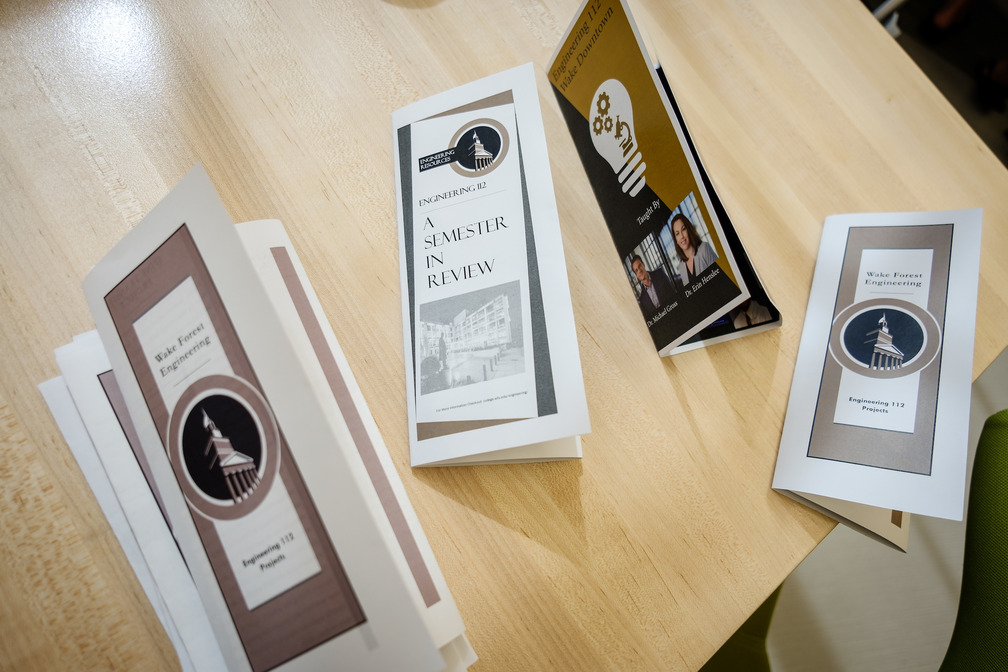
"We had to think about grading from an assignment-independent perspective, and think about it from a 'What are we wanting them to demonstrate?' perspective."
It remains Erin's favorite project of that time.
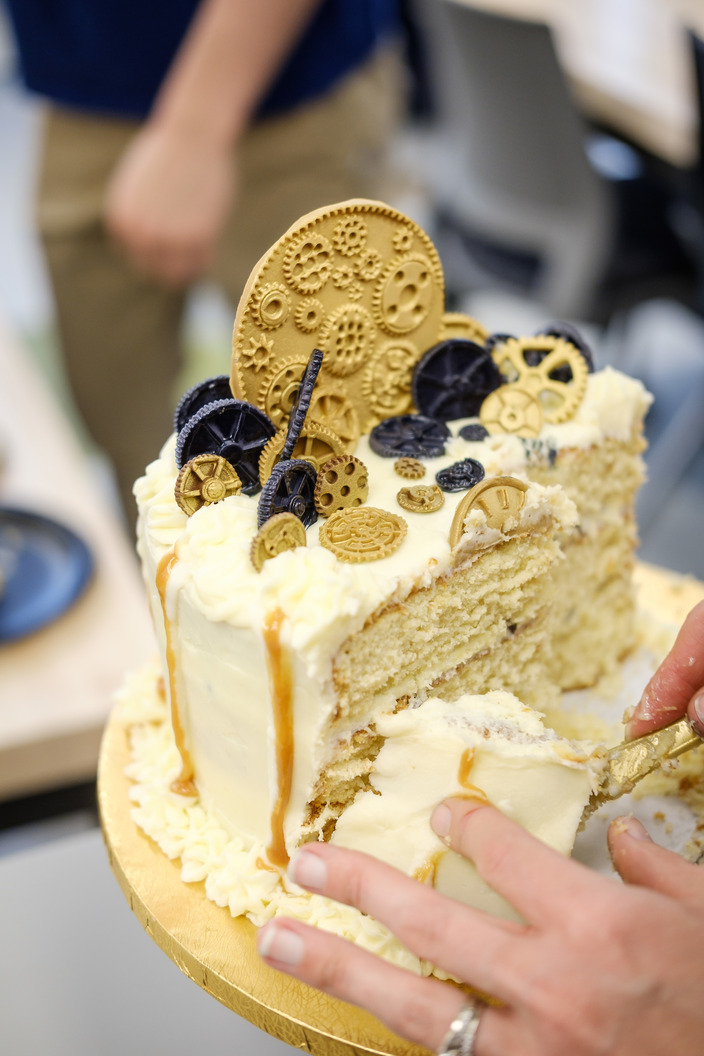
"It was a risk to try it, and what they came back with was phenomenal. Five groups produced promotional videos. One was a music video. We used the three-hour final period as a project showcase. We had the First Annual Golden Gears Film Festival and released the five promotional videos during it. One student group produced a Twitter account through the whole semester and published their entire Twitter feed during the semester as their piece of media. Another group did a podcast. Several groups did brochures and posters. One did a poster and a promotional video for the poster."
"We invited everyone in the building, we invited the Dean’s office, and the construction team currently building out these spaces - we had over 200 people come when we expected 2 people to show up. It was so much fun, and what they produced was so good."
Even though this happened in 2019, the lessons learned have stuck with Erin. "Ever since then, when I have the opportunity, I still keep to that principle of letting students submit what they want and grading them based on what I’m trying to get them to demonstrate. That completely changed how I thought about projects."
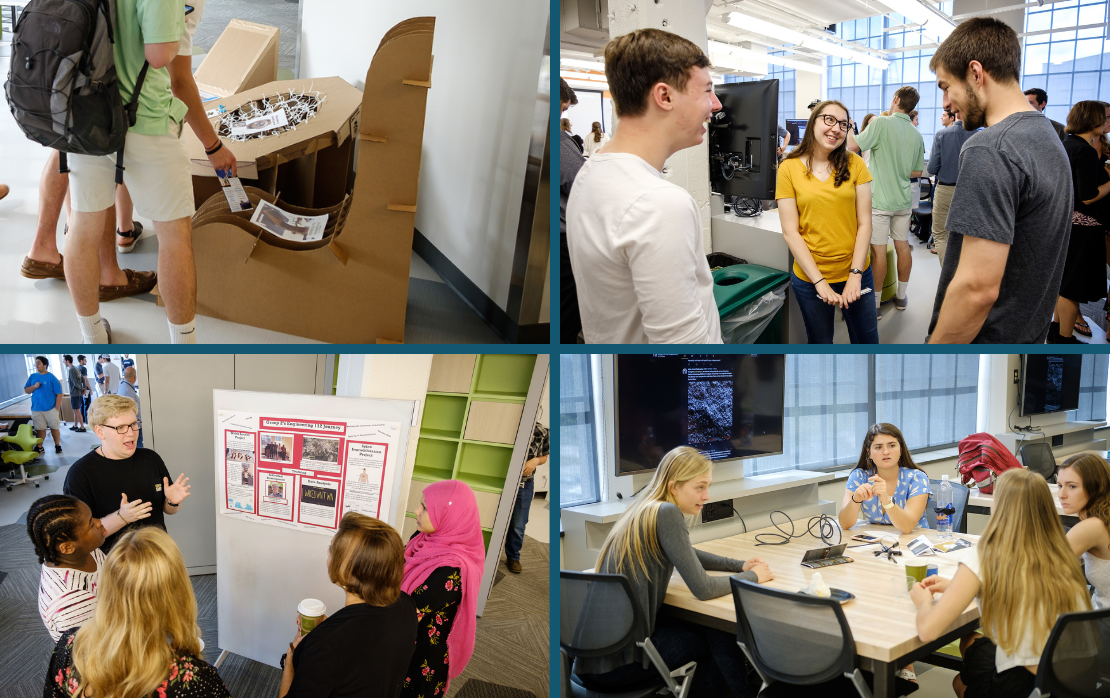
The Human Side of Engineering
"I want to make engineering accessible, enjoyable, and possible for as many people as I can."
What brings joy to her work?
"When I get the opportunity to just run with an idea. That’s why I’m at Wake Forest in a new department - that opportunity is there all the time. Sometimes I have to rein myself in because I don’t have the time!"
Erin makes great use of the time she has.
"Another motivator for being at Wake Forest is making engineering accessible, enjoyable, and possible for as many people as I can. I love going into the elementary school I partner with. We run activities; one is the Bottle Rocket Launch I did with Breigh Roszelle. Gary Brooking, and Michael Caston in the Making With Purpose workshop."
Breigh sent Erin the Bottle Rocket Launch materials to send to the elementary school, where their STEM teacher had all the kits made:
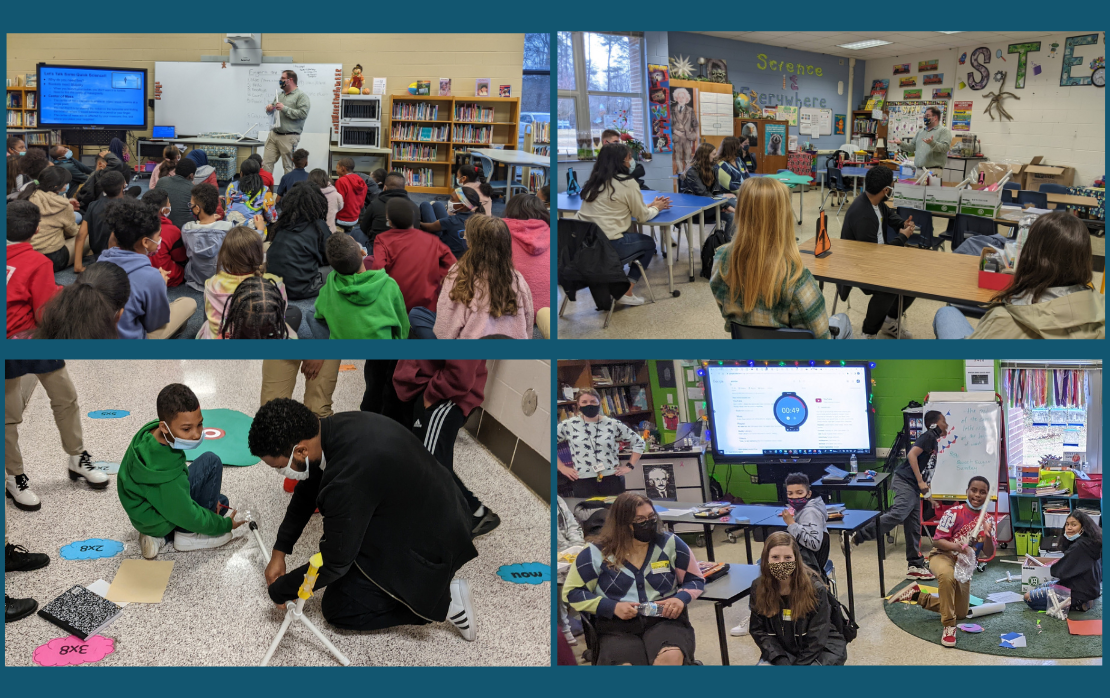
When Erin asks the fifth graders, "What is an engineer?", the responses are along typical lines of "They fix your car."
She leaves them with a far different perspective. "Pick your favorite subject in school," she tells them. "Some of them will say it's lunch or recess, but even so, there's something in engineering for it. Engineers are involved in designing the playground equipment. Engineers are involved in food packaging. It's about getting kids to see that anything you like and are passionate about, there's engineering for that."
On the higher education side, it's about doing those kids justice. "We need to create a college environment where we haven’t weeded them out, where they’re still able to pursue their passion and apply engineering to it."
Speaking of food, another outreach program is The Great Engineering Bake Off, which is a weeklong summer camp for 4th - 8th graders to learn different processes through food and baking. Try it yourself:
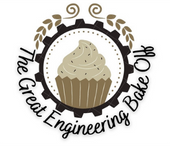
The Great Engineering Bake Off Summer Camp
Connecting Entrepreneurial Mindset to DEI
Erin’s experiences, investigation, and interest in Making led her to make connections between the entrepreneurial mindset and diversity, equity, and inclusion (DEI) for undergraduate engineering education. What were her first indicators that Making and the entrepreneurial mindset could positively influence developing impactful DEI goals?
“It was a whole spiderweb of stuff coming together,” Erin recalls. “The first thing was: I hated giving tests. I had students who I knew had accommodations from the university, but the only accommodations they had were for extra test time and a low distraction environment. What do I do for them in a class that doesn’t have tests? Surely the answer isn’t ‘nothing’! And here I am bringing the students to a Makerspace, and it might not be positive for everybody, especially if students are in need of low distraction environments, have a hard time working in groups, or have physical disabilities.”
As Erin moved her class to a more project-based, hands-on approach, she thought of what it could look like from an accessibility standpoint. “I went down a rabbit hole of inclusive practices for Makerspaces. And since I spent so much time on it, I thought I needed to do something with it from a career perspective.”
Erin used the pilot surveys she did in her 2020 Engineering Unleashed Fellowship for preliminary data in an NSF proposal called Building Capacity in STEM Education Research. That solicitation is aimed at faculty in STEM disciplines who want to get started doing education research, and propose a project and a development plan to develop themselves into an education researcher. “I got that funding, which opened the door for more reading and workshops specifically on inclusive STEM education. I’m sitting in these workshops where people are sharing best practices for inclusive and equitable classrooms, and I’m reminiscing on the workshops I went to for KEEN. There’s so much overlap: If you’re doing universal design, if you’re doing student-centered learning, if you’re providing opportunities for student autonomy and agency - you’re developing all this mindset! I started digging into the literature on people who made this link, and not a lot of people have, so that was my moment where I said I’m going to make that link.”
Erin feels fortunate she has colleagues also up for these ideas. “We started putting it all together in a more intentional way. We’re doing these practices toward different goals, but how can we consolidate and package it together so we’re working toward one outcome versus pigeonholing everything? We tied Mike Gross’s student motivation pieces into how we were going to assess various things we were trying in class toward equity and inclusion. Lauren Lowman’s Fellowship focused on creating more problem-solving studios that introduced students in underrepresented figures in STEM, so we were then running those problem-solving studios and doing student motivation profiles on a ‘normal’ problem-solving studio, a ‘normal’ class, and then a problem-solving studio highlighting diverse figures.”
Working to Impact Students
Faculty do a lot of co-teaching at Wake Forest, so Erin has been able to co-teach with nearly everyone in her department. This includes developing the curriculum.
"We all came together to think about the four-year map. We tried to make intentional decisions about prerequisites that didn’t exclude students, and keep our curriculum flexible. Around 50% of our engineering students are studying abroad; around 50% are doing undergraduate research. We have football players, soccer players; the big time athletes majoring in engineering , we have Art majors double-majoring or minoring in engineering, because we have strived for such a flexible, inclusive curriculum. That’s our largest collective impact, I think.”
It’s also about growth - and failure.
“I try to be a model of mindset and demonstrate it for my students, but also show them that you can’t grow without failing. It’s not going to happen. Failing doesn’t feel good, but you can’t have a growth mindset without it. You won’t develop past a certain threshold without some level of discomfort, and we need to encourage students to lean into it instead of trying to resist. The entrepreneurial mindset provides a framework and vocabulary for us to talk about how to experience these things.”
This includes the shift we’ve been seeing in society. “Education talks about fearless problem-solving and resilience, but you have to provide a safe space to do that. This is because while education wants these things, they’re still so tied to your GPA. The two can’t coexist. Watching that tension play out has been interesting. Helping students navigate that tension is an opportunity. That’s entrepreneurial mindset in action.”
Labture
We couldn't let the opportunity slip by to ask about Erin's unique coinage of terms.
“I was joking to students that in the very first week of instrumentation class, we’re learning about things like Ohm’s Law, Kirchhoff’s Law, all the different units that go with electrical energy; people like Tesla and Edison. So I said, come up with a unit, a word, and publish it somewhere, and now it’s yours! And then I did it myself. The ‘labture’ came from me running my mouth one day about having “lab” every day in class as part of their lecture, and then I had to put my money where my mouth was. We’re going to have to put rubrics to it and grade it. I don’t know what that is yet, but it’s going to be a thing.”
“The goal for this instrumentation class was I wanted them doing something hands-on every day,” Erin continues. “I didn’t want a single class period where it was only lecture, and I also didn’t want it to be only problems like hand-calculation problem-solving, because we had a lot of learning we wanted them to do. So how to get all that done, the class time had to focus on the equipment available in class. We saved things like the paper problem-solving for out of class time."
Motivating Faculty Mindset
How can faculty get started with the entrepreneurial mindset?
"Pick a thing and start small!" Erin says. "An activity, a concept; also, take faculty development workshops and go to the KEEN National Conference. At the first KEEN Conference I went to, I was immediately struck by being surrounded by incredible people who are research faculty, teaching faculty, all with a similar dedication and passion for students and student learning. In academia, it’s really hard to find the balance between your research, teaching, and service, and also where to find the institutions that align with how you want to do all that. This community provides another opportunity for that values-alignment. If you aren’t getting it at your institution, you can from this large network. ”
Erin is still in touch with people from that first conference, and from the first workshop she did, Making with Purpose. "Everyone is so supportive and enthusiastic. When you’re drained and tired, you can draw energy from them. That was my favorite part of the Community Catalysts meetings. Being in a virtual room with other people excited about the same things you are. Even if you don’t agree with how to do those things, there’s still such a positive energy.”
Speaking of being an Engineering Unleashed Community Catalyst, Erin has enjoyed doing modules in the character development space. “When I was a Catalyst, one of the roles I did at Wake Forest was to do a card review for my colleagues. For anyone doing these character modules, I would do their card review to make sure those pieces were as useful and impactful as they could be. And then we worked on developing the modules themselves.”
With the post doctorates on the character development project, Adetoun Yeaman and Joe Wiinikka-Lydon, she created an ethics module, and recently presented it at ASEE. "This ties to the character virtue framework and I’m pretty proud of it!”
And with Lauren Lowman, she created an initiative called Hidden STEM. "We have a website with open access to some of our curricular pieces, and also developed new content aimed at quick, easily shareable infographics of minority contributors to STEM fields. One of my research students is an Engineering & Art double major. She’s now working on painting portraits of our next series of contributors."
"When you’re in academia, you’re surrounded by brilliant people," Erin says. "And I’m always shocked by how many of don't know their own brilliance. My favorite thing to do is to be their hype. It may sound cliché, but I run on energy that comes from hyping other people up. People have such great ideas. If you don’t know how great you are, I will tell you this every day until you get it! Colleagues, students, whoever. I’m never the smartest person in the room but that makes it an awesome room to be in (for me!)."
Rising Star Projects
Let's take a look at what Erin is thinking of doing with her award funding.
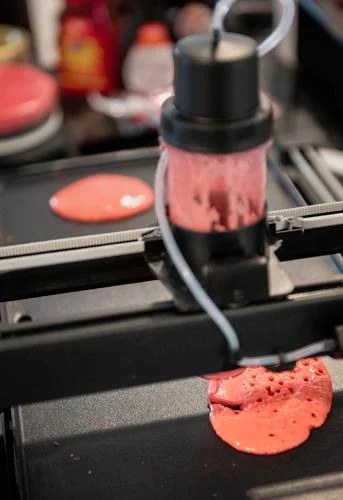 "I bought a pancake printer - it prints pancakes! - and I'm developing more food-based curriculum in a serious light. I had a high school summer intern looking at red blood cell morphology (different shapes of red blood cells), which is in my research area. She was researching the different shapes and how they’re affected by treatments. For her presentation she had pictures, but we also configured the pancake printer to print red blood cell pancakes. If the audience answered a question correctly, they got a red blood cell pancake! Even if they don't remember the name, they’ll remember what it looks like and what it tasted like."
"I bought a pancake printer - it prints pancakes! - and I'm developing more food-based curriculum in a serious light. I had a high school summer intern looking at red blood cell morphology (different shapes of red blood cells), which is in my research area. She was researching the different shapes and how they’re affected by treatments. For her presentation she had pictures, but we also configured the pancake printer to print red blood cell pancakes. If the audience answered a question correctly, they got a red blood cell pancake! Even if they don't remember the name, they’ll remember what it looks like and what it tasted like."
(Image: PancakeBot programmed to make red blood cell shapes at a demonstration for a project during the Wake Forest University’s Lab Experiences: Academics and Professions (LEAP) program’s symposium on Friday, July 29, 2022, at Wake Downtown in Winston-Salem, N.C.)
"I'm trying to find interesting, surprising, and unusual ways to teach engineering, and to create a bank of them," Erin continues. "Then if others want to give a demo in class, they'll have a kit ready to go. I got the idea from AnnMarie Thomas and her concept of Playful Learningat one of the KEEN conferences. I'm tying concepts like these into things I'm passionate about, like food."
Why Entrepreneurial Mindset Matters for Engineers
“I’ve always thought of what I did as an engineer as creative.”
“I took it for granted that creativity was part of engineering,” Erin says, “because I always thought it was a built-in part of it! I didn’t even know it was a problem to be solved. It wasn’t until I started looking into engineering education where people are trying to have engineers be more creative that I knew it was a problem to be solved.”
Being intentional and not taking it for granted are key - which goes along with the entrepreneurial mindset. “People drawn to engineering innately have those qualities of innovation, creativity, problem-solving, and thinking about opportunities for providing value. What I’ve realized is there has to be intentionality behind it or they don’t know they’re doing it. By having a framework like the 3Cs, you’re providing that intentionality. And be very deliberate about telling the students, ‘This is what you are doing; you are doing these things.’ It’s innately part of the day to day of engineering. They just don’t know it is.”
It helps to understand the distinction between entrepreneurial mindset and entrepreneurship. “Even faculty will use the terms interchangeably. Entrepreneurship is a very specific money-making thing, and that’s okay, but make sure you and your students are clear on the difference. Mindset is bigger than entrepreneurship.”
Closing Thoughts
What advice would she give students?
“Who do you want to be? What do you want to do? What do you want to look at as your accomplishments? Figure that out, and then align your activities to those things.”
Any more advice for faculty?
"You don't have to go straight from using the binder to throwing it out. Pick one thing that doesn’t sit well with you. I hated taking exams as a student. I got the same pit of anxiety as an instructor giving exams as I did taking them. I realized, I control this class! I can ditch exams! So what can I do other than exams? Start out with one of your own pain points or something small or localized as a foundation point."
Erin leaves us with this thought. "Be transparent. Keep a feedback loop open with your students. Tell them you're trying something new, tell them why you're doing it, and to let you know how it's going. Ask them questions about how they’re experiencing things. Your students will feel they have agency and a voice in how the course is going. This lets you readily correct things if they’re going down a path you don’t want them to go. While at the end of the day, you do have to worry about course evaluations, that kind of feedback loop transparency gives students a better idea of you as an educator."
Class Activities
- Making with Purpose - Wake Forest Engineering
- Hidden STEM Figures as Exemplars of Virtue and Character
- Developing Virtue in Laboratory Learning
- Ethical Considerations in AI: Integrating Ethics and Virtues into Mobile Robotics
- Empower Your Students: Techniques to Promote Student Autonomy and Enhance Entrepreneurial Mindset
- What Matters? How EML Can Integrate, Innovate, and Motivate Best Practices in Diversity and Inclusion